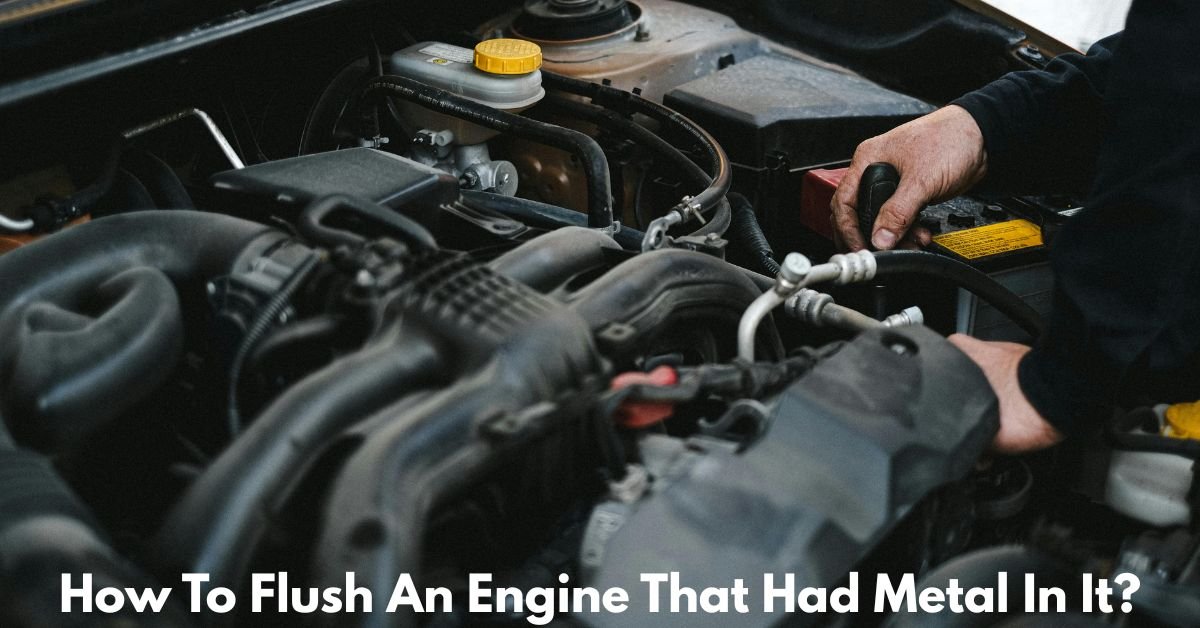The presence of metal shavings in the oil system may be one of the greatest culprits when an engine begins to make strange noises or perform worse. Metal in your engine is a serious sign—often pointing to internal wear or even imminent failure. But before writing off your engine, a thorough flush can help remove contamination and potentially save it from further damage. In this post, we’ll walk you through the essential steps to flush an engine that had metal in it.
How to Flush an Engine That Had Metal in It?
Why Metal in the Engine is a Big Deal
Metal shavings or debris in an engine are usually the result of internal components grinding against each other due to inadequate lubrication, bearing failure, or improper machining. These particles circulate with the oil, potentially scratching surfaces, clogging passages, and accelerating wear. That’s why flushing your engine thoroughly—and promptly—is essential.
Step 1: Diagnose the Source of the Metal
Before you begin the flush, you should try to determine the root cause of the metal contamination. Look for the following:
- Silver or copper-colored flakes (suggesting bearing wear)
- Magnetic shavings (usually from steel components)
- Sudden engine knocking or a drop in oil pressure
If the source of the metal isn’t identified and corrected, flushing the engine will only offer a temporary solution. It’s always a good idea to remove the oil pan and inspect internal components, or even use a borescope to check the internals without complete disassembly.
Step 2: Drain the Old Oil Completely
Start by running the engine for a few minutes to warm the oil. This helps suspend metal particles in the oil and allows for more efficient drainage. Then:
- Place a drain pan under the oil pan.
- After removing the drain cap, allow the oil to run out fully.
- Cut the oil filter open and check for metal before removing it. A lot of debris here is a red flag.
Dispose of the old oil and filter responsibly. If metal shavings are visible in large quantities, you may need to consider a rebuild.
Step 3: Use an Engine Flush Solvent (Optional but Helpful)
Engine flush additives can help dissolve sludge and free up particles stuck inside oil passages. If you choose to use one:
- Follow the product instructions precisely.
- Typically, you’ll mix it with new oil and let the engine run for five to fifteen minutes.
- Never rev the engine while a flush product is in it—these additives can thin the oil significantly.
Drain this oil immediately afterward. It will be dark and possibly carry more metal with it.
Must Read: How Should BMW N51 Engine React If Crankshaft Sensor?

Step 4: Replace the Oil and Filter — Again
Now it’s time for the first flush cycle:
- Install a new, inexpensive oil filter.
- Fill the engine with a low-cost conventional oil.
- Run the engine at idle for 15–30 minutes.
- Drain the oil again and inspect for metal.
If metal is still present, repeat this process until the oil shows minimal or no contamination. You might need to do this 2–3 times depending on the severity.
Step 5: Clean or Replace the Oil Pickup and Pan
It’s crucial to drop the oil pan and check the oil pickup screen if the metal contamination was significant. Metal shavings can clog the pickup, restricting oil flow and damaging the engine even after a flush.
Clean the pickup and the inside of the pan thoroughly. Use brake cleaner or engine degreaser and lint-free rags. Inspect for scarring or debris buildup.
Step 6: Final Oil Change with High-Quality Oil and Filter
Once you’re confident most of the metal is gone:
- Put in a good oil filter (synthetic media filters are a good option).
- Fill the engine with your preferred oil (synthetic or conventional depending on manufacturer recommendations).
- Monitor oil condition closely over the next few hundred miles.
You may also consider adding a magnetic drain plug or an inline oil filter magnet to catch any remaining particles.
When to Seek Professional Help
If you repeatedly find metal in the oil even after multiple flushes, or if your engine is making knocking or tapping sounds, it’s time to consult a professional. You could be facing a more serious internal issue—such as worn main bearings, rod bearings, or camshaft wear.
Conclusion
Flushing an engine with metal in it isn’t a magic fix, but it can buy time and potentially save your engine if the damage is minor. Always focus on finding and addressing the source of the problem first. Regular oil changes, quality filters, and early detection are your best defenses against future issues.
If your engine is past the point of recovery, don’t lose heart—rebuilds and replacements can bring it back stronger than ever.
